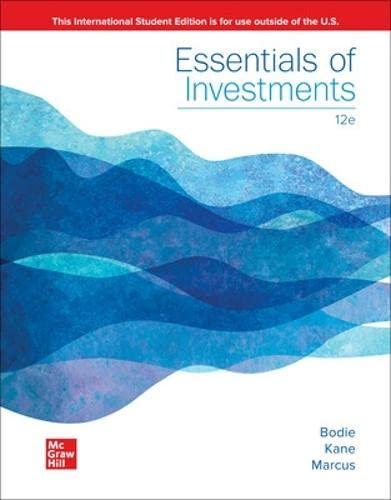Question
Hudson Valley Realty Hudson Valley Realty owns a number of commercial properties in suburban towns north and east of New York City. The firm previously
Hudson Valley Realty
Hudson Valley Realty owns a number of commercial properties in suburban towns north and east of New York City. The firm previously rented one of them to an upscale department store renowned for jewelry and fine china, but that also sold everything from chandeliers to bed linens to lawn furniture. The building became vacant two years ago when the tenant broke a ten-year lease after only three years of occupancy and unexpectedly filed for bankruptcy. Hudson Valley considered any effort to recover early termination penalties a waste of time and money.
Interest expense, high real estate taxes, insurance, and security costs make it extremely expensive to hold vacant property in this area. Although Hudson Valley is obviously eager to find a new tenant, it does not want another unexpected vacancy to have a serious negative effect on its investment returns. Hudson Valley wants to be sure that the new tenant will be financially stable and will likely stay for at least the full term of the lease.
Vermont Heritage, a well-known furniture chain that targets affluent customers with traditional tastes, has expressed interest in the location. Peter Cortland, Hudson Valleys rental manager, wants to take a close look at the potential tenants financial statements before entering into more serious negotiations. Vermont Heritage has submitted the following audited income statements and balance sheets for the last three years.
Vermont Heritage
Income Statement
($ in millions)
| Account | 20x3 | 20x2 | 20x1 |
| Sales | 949.0 | 955.1 | 907.3 |
| Cost of Goods Sold | 466.6 | 472.8 | 436.6 |
| Gross Profit | 482.4 | 482.3 | 470.7 |
| Selling & Administrative | 332.3 | 320.8 | 315.6 |
| Depreciation | 21.3 | 21.3 | 21.3 |
| Other income (expenses) | 1.4 | -9.2 | -11.9 |
| Earnings Before Interest and Taxes | 130.2 | 131.0 | 121.9 |
| Interest Expense | 0.8 | 0.6 | 0.6 |
| Taxable Income | 129.4 | 130.4 | 121.3 |
| Taxes | 49.2 | 50.1 | 45.9 |
| Net Income | 80.2 | 80.3 | 75.4 |
| Dividends | 24.1 | 20.1 | 18.9 |
Vermont Heritage
Balance Sheet
($ in millions)
| Account | 20x3 | 20x2 | 20x1 |
| Current Assets |
|
|
|
| Cash | 57.4 | 61.6 | 81.9 |
| Accounts Receivable | 28.0 | 27.0 | 26.4 |
| Inventory | 187.1 | 186.9 | 198.2 |
| Other Current Assets | 56.5 | 54.2 | 53.8 |
| Total Current Assets | 329.0 | 329.7 | 360.3 |
| Net Fixed Assets | 275.2 | 277.0 | 289.4 |
| Other Assets | 88.8 | 81.7 | 81.8 |
| Total Assets | 693.0 | 688.4 | 731.5 |
| Current Liabilities |
|
|
|
| Accounts Payable | 20.4 | 22.2 | 26.1 |
| Short-term Notes | 4.2 | 4.7 | 101.1 |
| Other Current Liabilities | 6.4 | 7.4 | 8.0 |
| Total Current Liabilities | 31.0 | 34.3 | 135.1 |
| Long-term Debt | 3.2 | 4.5 | 9.2 |
| Other Long-term Liabilities | 5.5 | 52.4 | 50.2 |
| Total Liabilities | 39.7 | 91.2 | 194.5 |
| Owners Equity |
|
|
|
| Common Stock | 230.0 | 230.0 | 230.0 |
| Retained Earnings | 423.3 | 367.2 | 307.0 |
| Total Owners Equity | 653.3 | 597.2 | 537.0 |
| Total Liabilities & Equity | 693.0 | 688.4 | 731.5 |
Required:
Look at Vermont Heritages sales revenue, earnings before interest and taxes, and net income over the three-year period.Would you classify it as a growing diminishing, or stable company?
Step by Step Solution
There are 3 Steps involved in it
Step: 1

Get Instant Access to Expert-Tailored Solutions
See step-by-step solutions with expert insights and AI powered tools for academic success
Step: 2

Step: 3

Ace Your Homework with AI
Get the answers you need in no time with our AI-driven, step-by-step assistance
Get Started


